The 2017 Consumer Electronics Show (CES) in Las Vegas has seen Hyundai unveil its new portable mobility concept – the IONIQ Scooter.
Electric, News, Quirky, Technology
Electric, News, Quirky, Technology
The 2017 Consumer Electronics Show (CES) in Las Vegas has seen Hyundai unveil its new portable mobility concept – the IONIQ Scooter.
Consumer, Events, Hybrid, News
As part of Hyundai’s quest to make people’s journeys better, the Korean carmaker has opened a sensory experience showcase in the heart of London’s Soho.
City Car, Electric, Hybrid, News

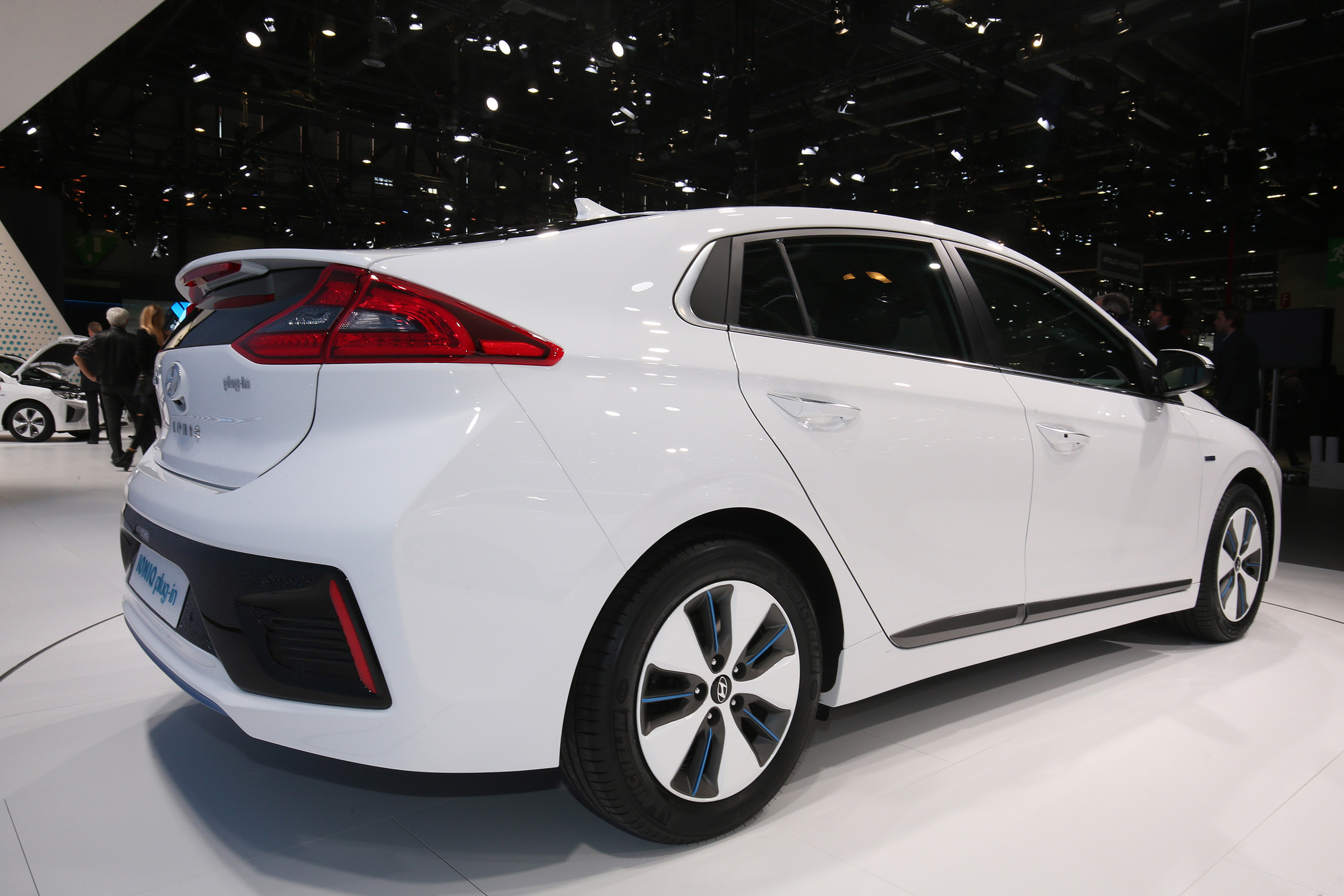
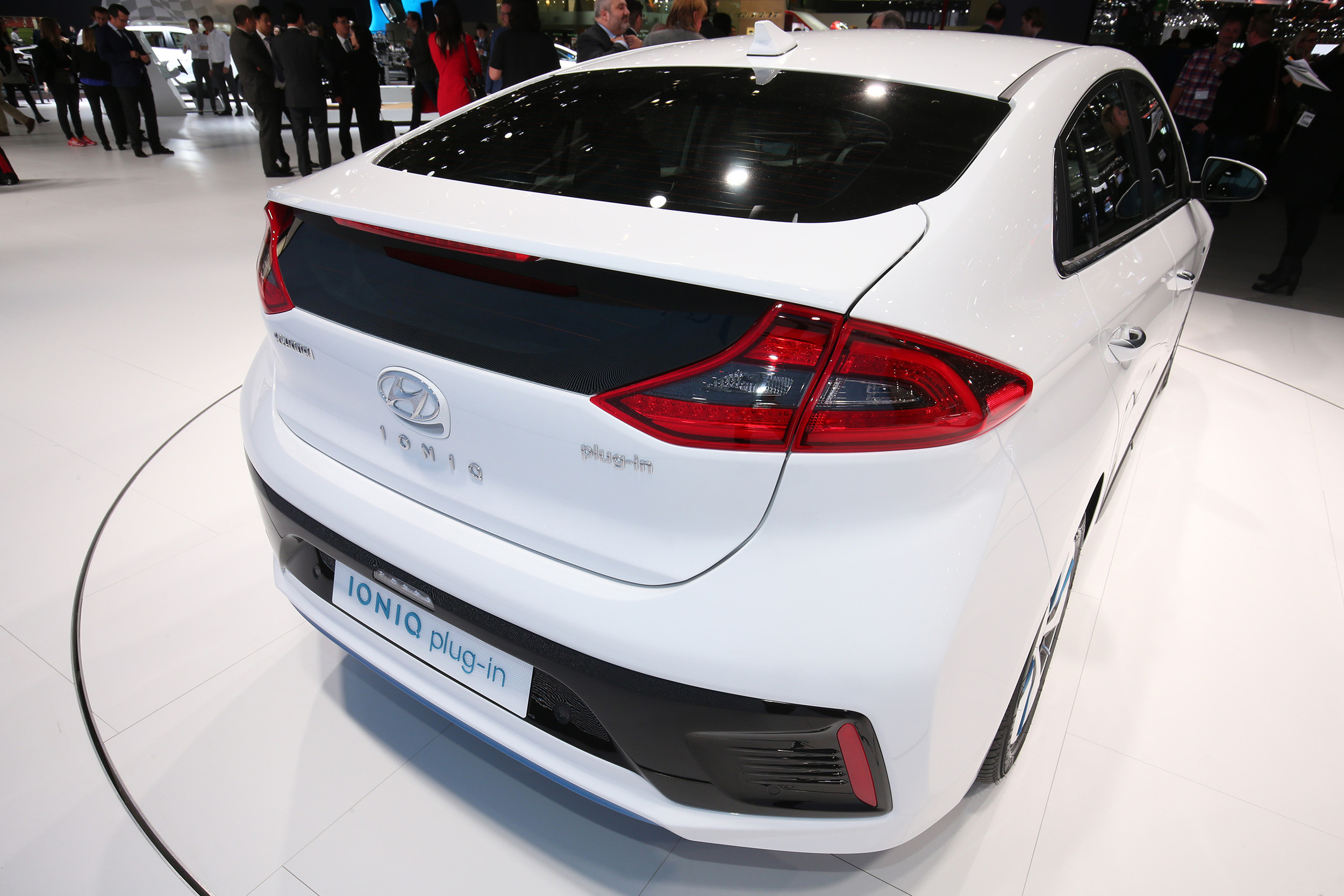
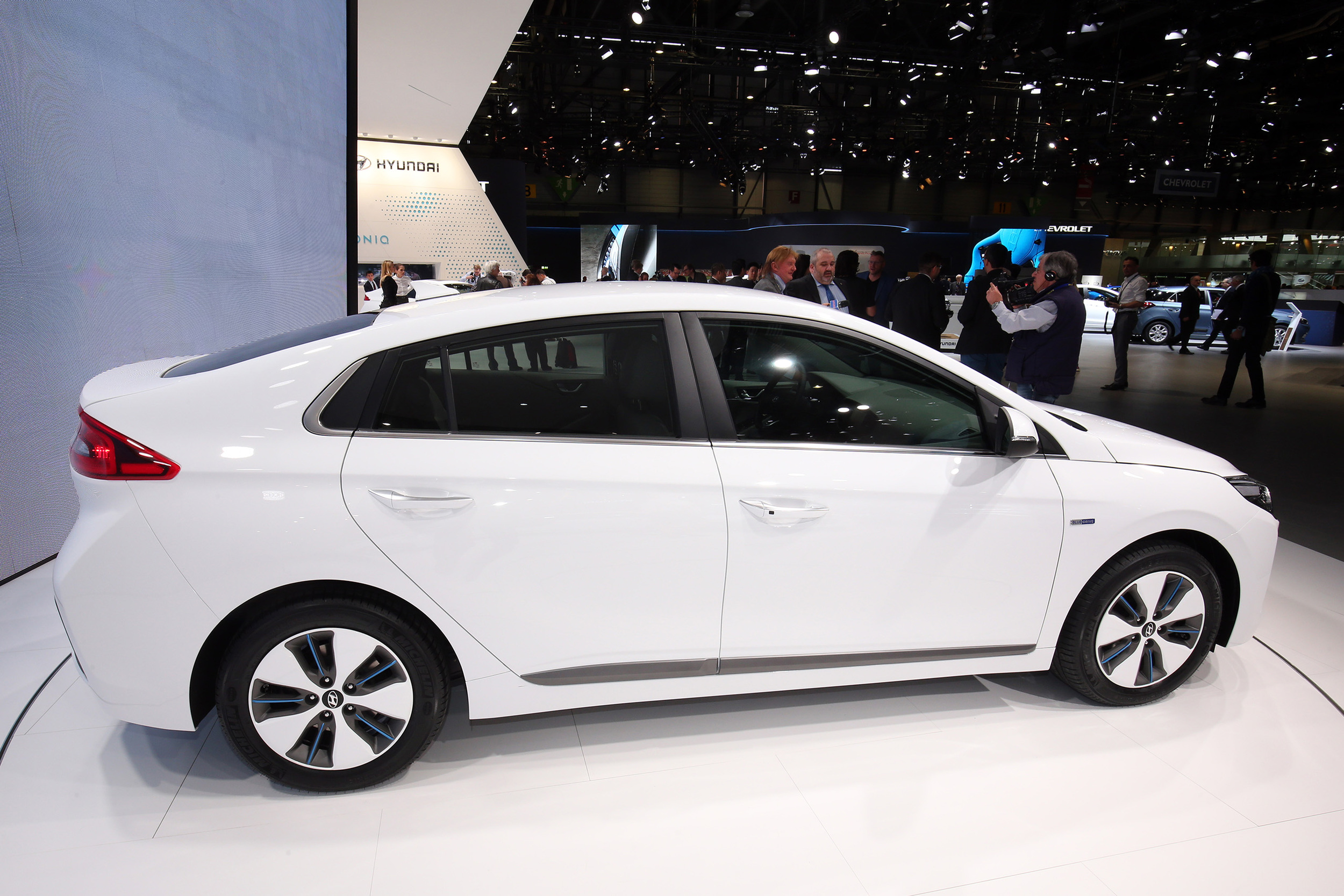
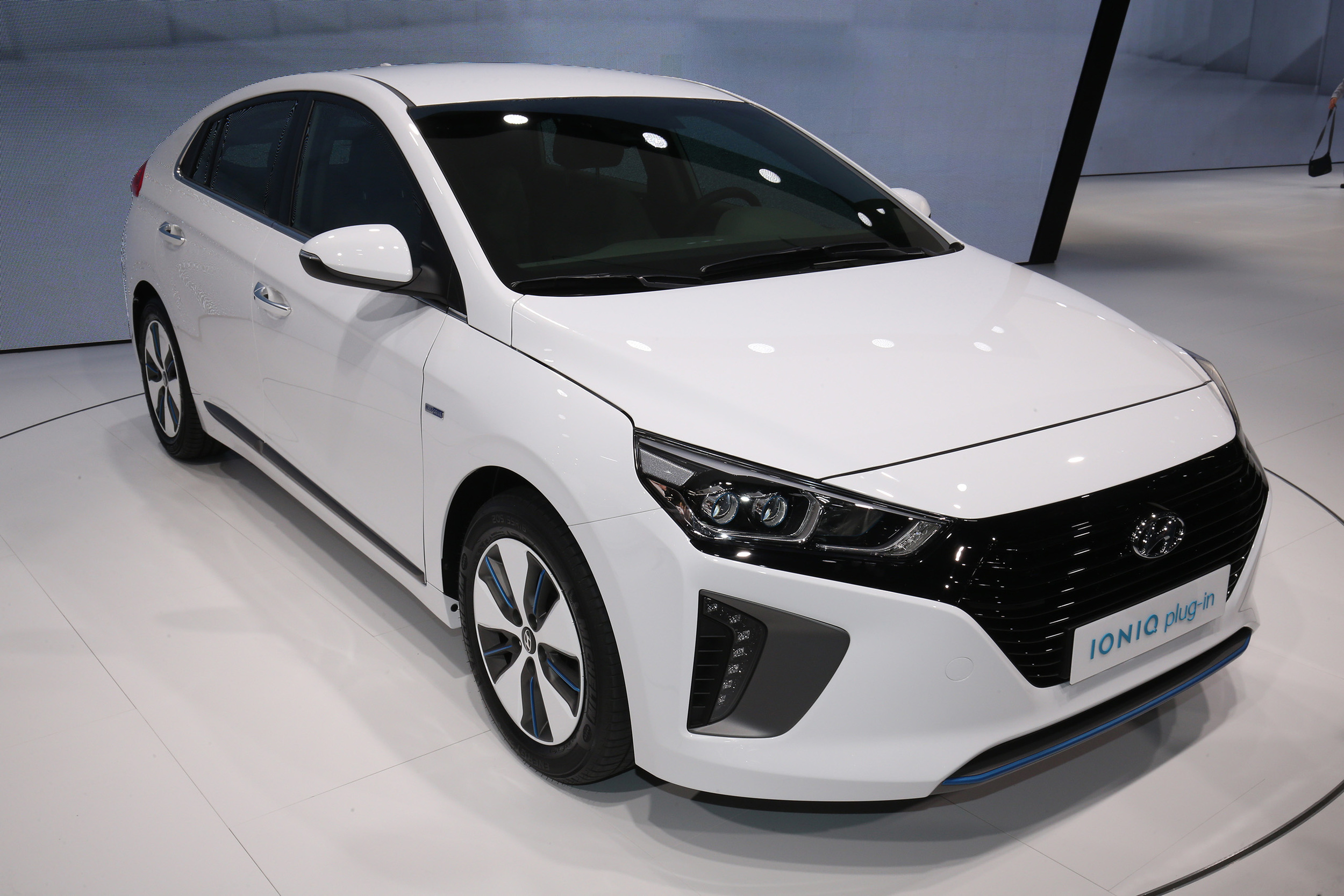
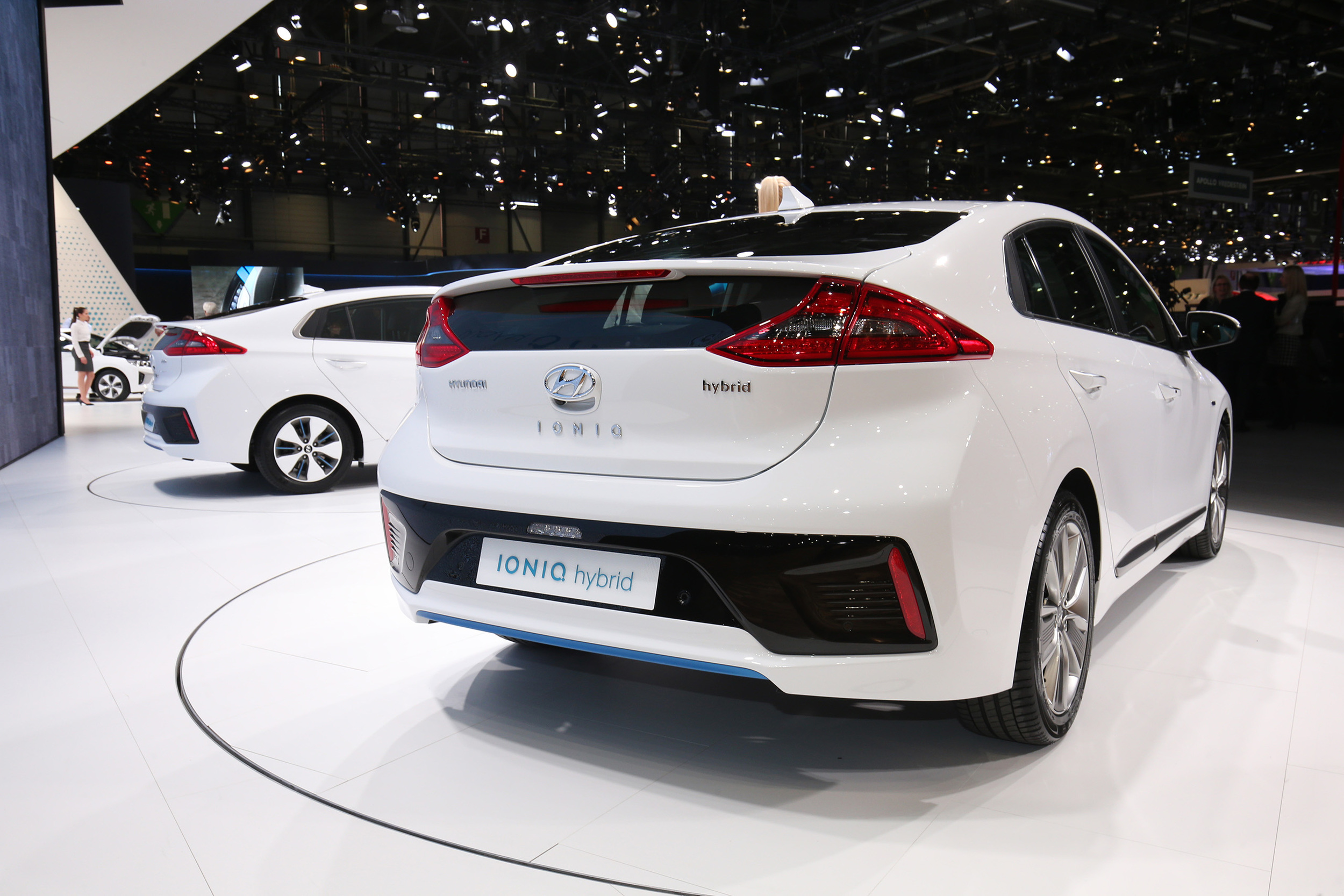
Hyundai pulled the covers off its all-new IONIQ electric line-up.
Consisting of the IONIQ Hybrid, IONIQ Electric and IONIQ Plug-in, the IONIQ becomes the world’s first model offering three electrified powertrains, says Hyundai. With the intention to offer low- to zero-emission mobility to everyone, Jochen Sengpiehl, Vice President Marketing at Hyundai Motor Europe, said: “IONIQ is an important step forward for our brand in Europe. We are bringing a unique new approach to e-mobility, with no compromise on great design, driving pleasure and new connectivity features. And we’re making it accessible to more customers, further extending our product line-up.”
The IONIQ Hybrid and IONIQ Plug-in both feature the new Kappa 1.6 GDI, direct injection petrol, four-cylinder engine with a thermal efficiency of 40 percent, delivering 105 PS and 147 Nm of torque. The engine has been tailored to the hybrid application and is combined with the direct responding, smooth shifting six-speed double clutch transmission. The mated electric motor enables pure electric driving and delivers instant torque as the chassis with rear multi-link suspension ‘greatly enhancing driving dynamics’.
The IONIQ Hybrid’s electric motor delivers 32 kW (43.5 PS) with maximum torque of 170 Nm, powered by a lithium-ion-polymer battery with 1.56 kWh capacity positioned under the rear seats. In combination with the 1.6-GDI engine, IONIQ Hybrid offers a system output of 103.6 kW (141 PS) rpm and up to 265 Nm of torque accelerating to a top speed of up to 115mph with targeted CO2 emissions as low as 79 g/km or lower (combined).
The IONIQ Plug-in can rely on over 31 miles of estimated pure electric driving range powered by the 8.9 kWh lithium-ion polymer battery. The 45kW (61 PS) electric motor together with the 1.6 GDI four-cylinder Kappa engine offer targeted CO2 emissions as low as 32 g/km.
The IONIQ Electric offers pure e-mobility through a 28 kWh lithium-ion polymer battery for an estimated maximum range of over 155 miles. The instantly available maximum torque of 295 Nm is delivered by the electric motor with a maximum output of 88 kW (120 PS) through the single-speed reducer transmission accelerating the car up to 103mph.
On the inside, ‘state-of-the art’ connectivity features include Android Auto, Apple CarPlay as well as TomTom live services and wireless charging of your smartphone. Furthermore, the driving experience becomes digital through the 7-inch TFT instrument cluster displaying all key driver information. Safety features include Autonomous Emergency Braking, Lane Keep Assist System, Blind Spot Detection, Rear Cross Traffic Alert and Smart Cruise Control ensures high safety levels for drivers and passengers alike.
All versions feature the sleek aerodynamic silhouette with a Cd value of 0.24 that complements the ‘soft lines’ and surfaces that trace the IONIQ’s outline.
Electric, Hybrid, Hydrogen Fuel Cell Car, News, Family Car


Following its unveiling to the media in South Korea, Hyundai has confirmed details of its next generation of hybrid vehicles, dubbed IONIQ.
Rag Jung, Head of Project Management Division at Hyundai's R&D Centre said, "IONIQ embodies Hyundai Motor's new thinking and bold ambitions for the future. This world-class dedicated hybrid will be the starting point of our future mobility."
Built on a chassis created specifically to carry the world's first choice of three efficient and ultra-low emission powertrains, the IONIQ contains 53% Advanced High Strength Steel combined with lightweight aluminum. The new model saves 12.6kg (45%) of weight by casting non-structural bodywork from aluminum, such as the hood, tailgate and suspension components. Where crash structure or energy absorption is necessary, the structure features Advanced High Strength Steel that can withstand significant collision forces.
The new model was created with 'dynamic ride and handling at its core', says Hyundai, setting it apart from other hybrid vehicles. Positioning the car's batteries low and forward achieves a low centre of gravity that enables responsive, stable cornering backed up by dual lower arm multi-link suspension fitted at the rear.
The full IONIQ range will feature a choice of electric, plug-in hybrid and hybrid powertrains, a world first for a single model. At the unveiling in Korea, details were shared for the first version to come to market - the hybrid.
With 40 percent thermal efficiency, the new 1.6-litre Kappa GDi engine developed exclusively for Hyundai's hybrid engines, combines with the permanent magnetic electric motor to deliver maximum outputs of 105PS and 47PS - engine and motor respectively.
The Lithium Ion Polymer Battery optimises output from the high voltage motor to allow for rapid regeneration while power distribution is controlled by a hybrid-exclusive Dual Clutch Transmission (DCT).
Hyundai claims power transmission efficiency of 95.7 percent will deliver a prompt response, acceleration performance and smooth gear changes to delight drivers with handling alongside the hybrid's efficiency.
Electric, Hatchback, Hydrogen Fuel Cell Car, Hybrid, News

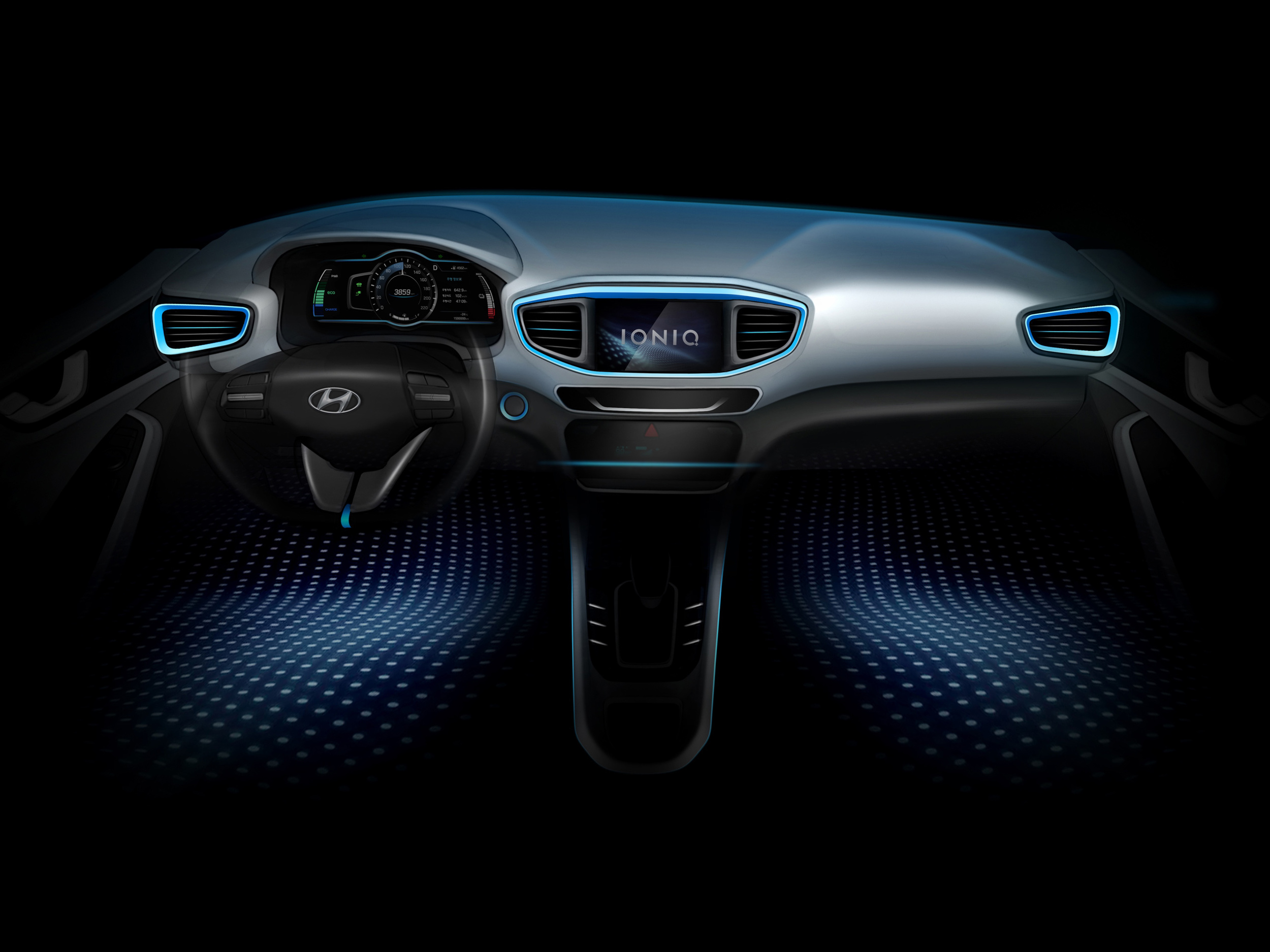
A new rendering of Hyundai’s all-new IONIQ hints at the looks of the alternative-fuel compact vehicle, which is due for launch in early 2016.
Hyundai has confirmed that the IONIQ will be the world’s first car to offer a choice of three ultra-low-emission powertrains: full electric, plug-in gasoline / electric hybrid, or gasoline / electric hybrid.
With a sleek, coupe-like silhouette, Hyundai says the IONIQ will deliver a fun and responsive driving experience, while also meeting the needs of those wishing to reduce the impact their motoring has on the environment.
At the front, it sports the familiar Hyundai hexagonal grille, topped by a gloss-black element that extends outwards to meet new headlamps featuring integrated ‘C’-position lights.
Inside the IONIQ the smooth, clutter-free theme continues. A clear, logical approach has been applied to the layout of control functions, with simple surfaces that make use of eco-friendly materials to convey, says Hyundai, ‘a futuristic yet warm cabin ambience that will appeal to a new generation of motorists’.
The IONIQ’s name references elements of its creation. An ion is an electrically-charged atom, linking to the car’s clever combination of electrified powertrains. The ‘I’ is said to reference the ‘unique offering it brings to the Hyundai range, demonstrating the brand’s environmental commitment and willingness to maximise choice for its customers’. Finally, the Q is depicted in the car’s logo as a visual breakthrough, acknowledging the fresh new approach of this advanced, low-emission model.
Following a world premiere in Korea in January, the IONIQ is due to be shown during March 2016 at the Geneva International Motor Show and the New York Auto Show.
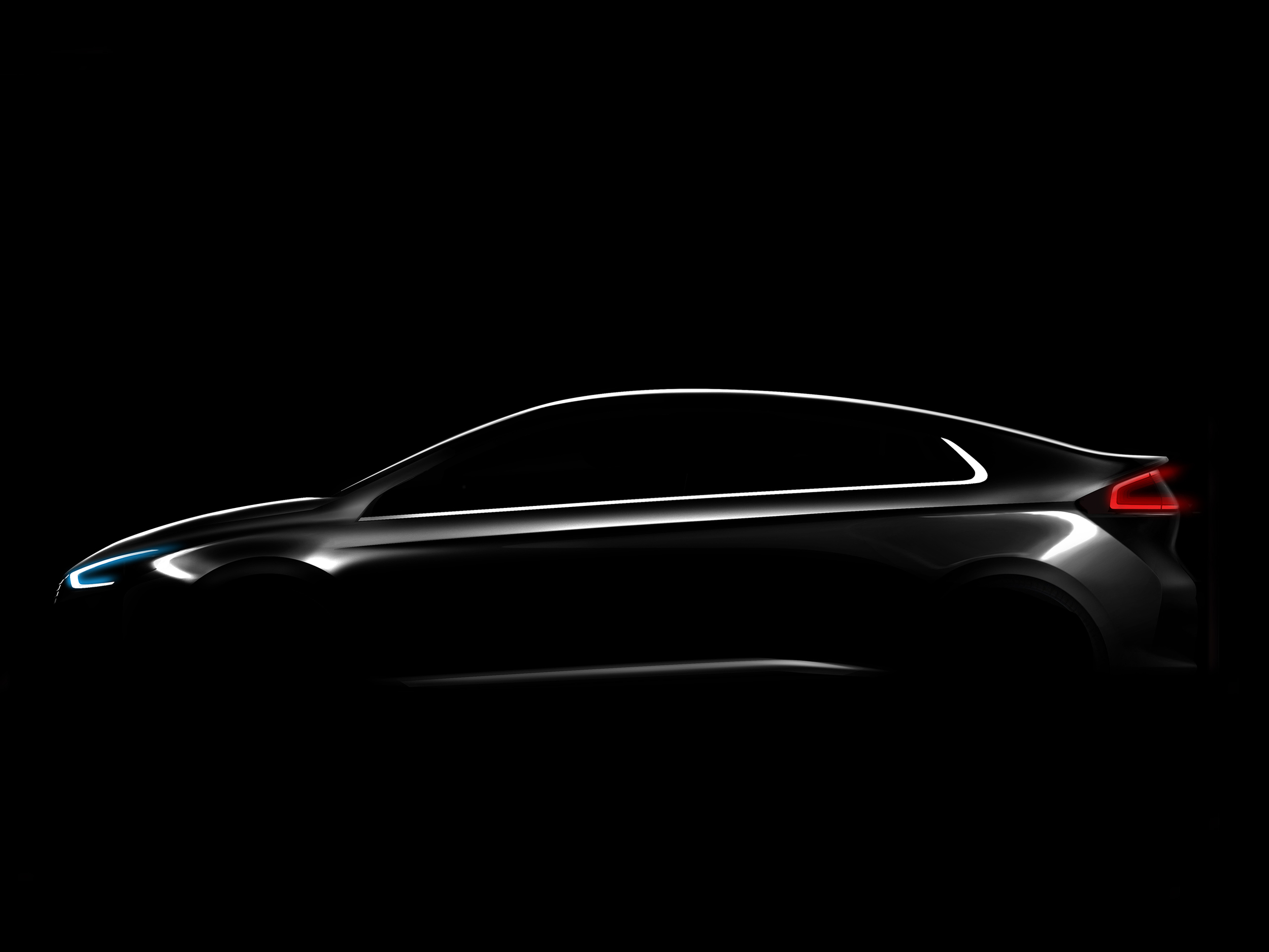
The car will be available with electric, plug-in petrol/electric hybrid, or petrol/electric hybrid powertrain - the first car from any manufacturer to offer these three powertrain options in a single body type. The IONIQ will combine 'class-leading fuel efficiency with a fun, responsive drive and attractive design, a unique mix not yet achieved by a hybrid vehicle' says Hyundai.
The new car's name references elements of its creation (with 'ion' representing an electrically-charged atom) and is based on an 'exclusive' new platform, made specifically for the car's multi-powertrain options. The chassis is optimised to deliver 'responsive handling' while remaining efficient in each of its three powertrain configurations.
In its fully-electric (EV) form, the IONIQ is powered by a high capacity, ultra-efficient lithium ion battery. The plug-in hybrid (PHEV) version combines a fuel-efficient energy with battery power obtained by charging the car with electricity, boosting its range while cutting its emissions. Finally, the hybrid (HEV) utilises the petrol engine and motion of the car to charge the on-board battery, which returns enhanced efficiency by supplementing the engine's power.
Woong-Chul Yang, Head of Hyundai Motor R&D Center said, "Hyundai Motor has a heritage of building innovative, fuel-efficient vehicles, so we are proud to advance our eco-friendly car line-up with the introduction of IONIQ. Our vision for future mobility focuses on choice, with a variety of powertrain options to suit customers' varied lifestyles, without compromising on design or driving enjoyment. IONIQ embodies Hyundai Motor's vision to shift the automotive paradigm and future mobility; IONIQ is the fruit of our efforts to become the leader in the global green car market."
Following its world premiere in Korea in January, the IONIQ is due to be shown at the Geneva Motor Show, followed by the New York Auto Show, both in March 2016.